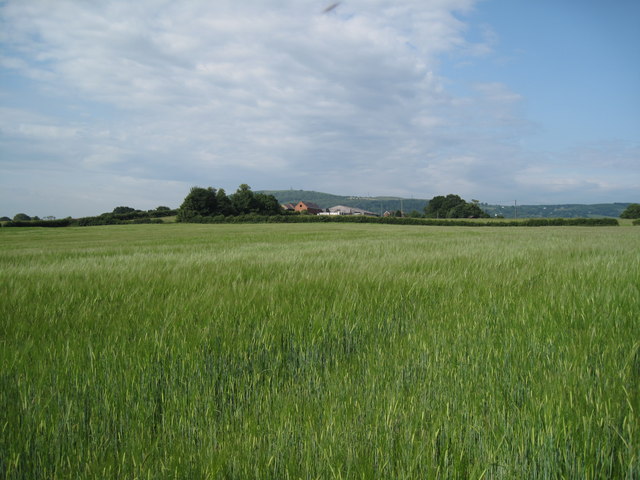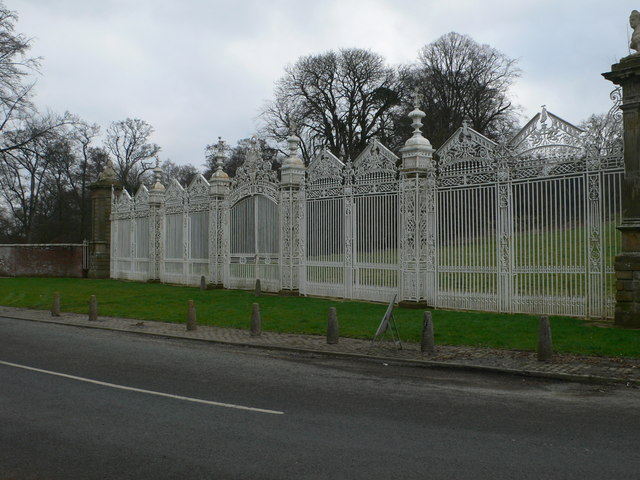|
Hope Hall
Hope Hall, Hope, Flintshire, Wales was a country house, built in 1740 and demolished in 1960. The building Hope Hall was built on the site of am old farm house and building. The Hall was described as being an imposing building, two and a half stories high, constructed of red coloured handmade brick building with stone features. There was a small brickyard at Hope Hall for the purpose of making bricks solely for the maintenance of the estate building. The bricks were made by machine and name stamped ' Hope Hall'. The precise dates that the brickyard were in operation is unknown, although on a map dated 1871 shows a shed and a small claypit at the Hall. On 8 October 1867 a fire destroyed an outbuilding and its contents, valued at £150. On Sunday, 10 August 1878, the wife of the Reverend Robert Roberts was in the house when it was struck by lightning damaging a chimney pot. The hall was demolished in 1960. History Differing accounts exist about the origins of Hope Hall. Wri ... [...More Info...] [...Related Items...] OR: [Wikipedia] [Google] [Baidu] |
Hope, Flintshire
Hope ( cy, Yr Hôb) is a small village and community in Flintshire, north-east Wales. The village is located approximately 3 miles / 4.5 km from the Wales-England border, on the course of the River Alyn, and less than 5 miles from Wrexham. Hope is one of several villages including Caergwrle, Abermorddu and Cefn-y-bedd which together form the community. At the 2001 Census, community the population was 2,522, increasing to 4,224 at the 2011 Census partly due to boundary changes. One of the major features in the area is Hope Mountain (''Mynydd yr Hob''), to the west of the village. History ''Yr Hob'' was originally the name of a commote within the cantref of Maelor in the medieval Kingdom of Powys. Both the Welsh and English language names are derived from an Old English word ''hop'' meaning "enclosed land in a marsh", a relic of Mercian settlement in the area.Owen, H. W. (2015) ''The Place-names of Wales'', UWP, p.53 In 1086, when the Domesday Book was compiled, Hope w ... [...More Info...] [...Related Items...] OR: [Wikipedia] [Google] [Baidu] |
Farmland And Hope Hall Farm - Geograph
Agricultural land is typically land ''devoted to'' agriculture, the systematic and controlled use of other forms of lifeparticularly the rearing of livestock and production of cropsto produce food for humans. It is generally synonymous with both farmland or cropland, as well as pasture or rangeland. The United Nations Food and Agriculture Organization (FAO) and others following its definitions, however, also use ''agricultural land'' or as a term of art, where it means the collection of: * ''arable land'' (also known as ''cropland''): here redefined to refer to land producing crops requiring annual replanting or fallowland or pasture used for such crops within any five-year period * ''permanent cropland'': land producing crops which do not require annual replanting * ''permanent pastures'': natural or artificial grasslands and shrublands able to be used for grazing livestock This sense of "agricultural land" thus includes a great deal of land not devoted to agricultural use. Th ... [...More Info...] [...Related Items...] OR: [Wikipedia] [Google] [Baidu] |
Hope Hall Drive - Geograph
Hope is an optimistic state of mind that is based on an expectation of positive outcomes with respect to events and circumstances in one's life or the world at large. As a verb, its definitions include: "expect with confidence" and "to cherish a desire with anticipation." Among its opposites are dejection, hopelessness, and despair. In psychology Professor of Psychology Barbara Fredrickson argues that hope comes into its own when crisis looms, opening us to new creative possibilities. Frederickson argues that with great need comes an unusually wide range of ideas, as well as such positive emotions as happiness and joy, courage, and empowerment, drawn from four different areas of one's self: from a cognitive, psychological, social, or physical perspective. Hopeful people are "like the little engine that could, ecausethey keep telling themselves "I think I can, I think I can". Such positive thinking bears fruit when based on a realistic sense of optimism, not on a naive "fal ... [...More Info...] [...Related Items...] OR: [Wikipedia] [Google] [Baidu] |
Esclusham
Esclusham ( cy, Esclus or ''Esclys'') is a community and electoral ward in Wrexham County Borough, Wales. The community includes the villages of Bersham, Rhostyllen, Aberoer, Llwyneinion and Pentre Bychan, as well as a number of smaller settlements, the park at Erddig, and an area of the Ruabon Moors west of Aber-oer known as Esclusham Mountain. The population of the community at the 2011 Census was 3,515. History The name is recorded as Esclesham or Esclusham as early as 1315, likely originating in a combination of the Old English personal name ''Æscel'' with ''ham'', "settlement"; the name is locally pronounced with stress on the second (middle) syllable, probably due to the influence of Welsh language stress patterns.''Nomina'', v. 11-13, 1987, 102 The old township of Esclusham, within the manor of Esclusham, was part of the historic Marcher Lordship of Bromfield and Yale. The ''Survey'' of topographer John Norden, carried out in 1620 within Bromfield and Yale, defined t ... [...More Info...] [...Related Items...] OR: [Wikipedia] [Google] [Baidu] |
Rhostyllen
Rhostyllen () is a village in Wrexham County Borough, Wales, south-west of the city of Wrexham. At the time of the 2001 census, area Wrexham 014A, which includes Rhostyllen itself, had a population of 1,383 in 599 households.Wrexham 014A Key Figures Office for National Statistics Etymology Its name may be derived from the Welsh words ''rhos'' ("moor", or " rush pasture") and ''estyll'' ("staves" or "planks").History Rhostyllen was a part of the old |
Broughton Hall, Flintshire
Broughton Hall was a large country house that was located in Broughton, Flintshire, Wales. It was demolished in the early 1970s and houses now exist on the site. The only indication of its existence is the main road through the village; Broughton Hall Road. Richard Slaughter was resident from 1754, it was during this time that the front of the old mansion house was rebuilt in the Gothic stylePage 5, Remember When... Old Broughton, Bretton and Warren. Glynne Kay. 1991. In 1830 the Broughton Hall estate was purchased by the Glynne family and was leased to various members of the gentry. William Johnson, corn merchant, magistrate, alderman and mayor of Chester and his family lived thereduring the latter years of the nineteenth century. During his time living at Broughton Hall, William Johnson made significant donations to the local church that included; the addition of a chancel and two stained glass windows in 1876-7. Stone portraits of William Johnson and his wife exist, on the o ... [...More Info...] [...Related Items...] OR: [Wikipedia] [Google] [Baidu] |
31 Geo
{{Numberdis ...
31 may refer to: * 31 (number) Years * 31 BC * AD 31 * 1931 CE ('31) * 2031 CE ('31) Music * ''Thirty One'' (Jana Kramer album), 2015 * ''Thirty One'' (Jarryd James album), 2015 * "Thirty One", a song by Karma to Burn from the album '' Wild, Wonderful Purgatory'', 1999 Film and television * ''31'' (film), a 2016 horror film * 31 (Kazakhstan), a television channel * 31 Digital, an Australian video on demand service, and before 2017 an Australian community television channel from Brisbane, Queensland. Other uses * Thirty-one (card game) See also * * * * * Channel 31 (other) * Highway 31 (other) * Section 31 (other) * List of highways numbered 31 The following highways are numbered 31: International * Asian Highway 31 * European route E31 Australia * Hume Highway ** Hume Motorway ** Hume Freeway * - South Australia ** Gorge Road ** Little Para Road ** South Para Road ** Lyndoch Val ... [...More Info...] [...Related Items...] OR: [Wikipedia] [Google] [Baidu] |
Leeswood
Leeswood ( cy, Coed-llai) is a village, community and electoral ward in Flintshire, Wales, about four miles from the historic market town of Mold. At the 2001 Census, the population was 2,143, reducing slightly to 2,135 at the 2011 Census. It was the centre of attention during the Mold Riot of 1869, where the owners of the mine refused to allow the speaking of the Welsh language in the mines. Around a quarter of Leeswood's resident population has some knowledge of the Welsh language, exceeding the county's average of 21.4%. In all categories of linguistic competency, the ward performs around the Flintshire average, although the proportion of those able only to understand spoken Welsh is higher than the county and national average. The famous White Gates of Leeswood Hall were attributed to the Davies brothers of Wrexham. The family of smiths were known in the 18th Century for their high-quality work using wrought-iron. The Wynne baronets were later to live in Leeswood Hall a ... [...More Info...] [...Related Items...] OR: [Wikipedia] [Google] [Baidu] |
Eglwyseg
The Eglwyseg valley is an area to the north east of Llangollen in Denbighshire, Wales; it is within the boundaries of Llantysilio Community. The name also refers to a widely scattered hamlet in the valley. Formerly the old township of Eglwysegl or Eglwysegle, the area is now best known for its dramatic rock formations and unspoiled historic landscape. Topography The area is best known for the prominent Lower Carboniferous Limestone escarpment, the Eglwyseg Rocks, ( cy, Creigiau Eglwyseg, ), which runs north–south for around . The high point of the area is at on ''Mynydd Eglwyseg'' (Eglwyseg Mountain, ). Various parts of the escarpment have specific names; these include '' Craig y Forwyn'' (Maiden's Rock), ''Craig Arthur'' (Arthur's Rock), ''Tair Naid y Gath'' (the Three Leaps of the Cat) and ''Craig y Cythraul'' (Devil's Rock). The ''Afon Eglwyseg'' (Eglwyseg River) flows through the valley, joined by a number of tributary streams such as the ''Nant Elli'' and ''Nant Craig ... [...More Info...] [...Related Items...] OR: [Wikipedia] [Google] [Baidu] |
Wynne Baronets
The Wynne Baronetcy, of Leeswood Hall, Leeswood in the County of Flint, was a title in the Baronetage of Great Britain. It was created on 9 August 1731 for George Wynne, subsequently Member of Parliament for Flint Boroughs. The title became extinct on the death of the third Baronet some time between 1764 and 1792. Wynne baronets, of Lees Wood (1731) *Sir George Wynne, 1st Baronet (1700–1756) *Sir John Wynne, 2nd Baronet (1702–1764) *Sir John Wynne, 3rd Baronet (died before 1793) See also *Wynn baronets of Gwydir and Bodvean *Winn baronets Lord Headley, Baron Allanson and Winn, of Aghadoe in the County of Kerry, was a title in the Peerage of Ireland. It was created in 1797 for Sir George Allanson-Winn, 1st Baronet, a former Baron of the Court of the Exchequer and Member of Parlia ... of Nostell Priory References {{DEFAULTSORT:Wynne Extinct baronetcies in the Baronetage of Great Britain ... [...More Info...] [...Related Items...] OR: [Wikipedia] [Google] [Baidu] |
Brickworks In The United Kingdom
A brickworks, also known as a brick factory, is a factory for the manufacturing of bricks, from clay or shale. Usually a brickworks is located on a clay bedrock (the most common material from which bricks are made), often with a quarry for clay on site. In earlier times bricks were made at brickfields, which would be returned to agricultural use after the clay layer was exhausted. Equipment Most brickworks have some or all of the following: *A kiln, for firing, or 'burning' the bricks. *Drying yard or shed, for drying bricks before firing. *A building or buildings for manufacturing the bricks. *A quarry for clay. *A pugmill or clay preparation plant (see below). Brick making Bricks were originally made by hand, and that practice continues in developing countries and with a few specialty suppliers. Large industrial brickworks supply clay from a quarry, moving it by conveyor belt or truck/lorry to the main factory, although it may be stockpiled outside before entering th ... [...More Info...] [...Related Items...] OR: [Wikipedia] [Google] [Baidu] |





.jpg)

